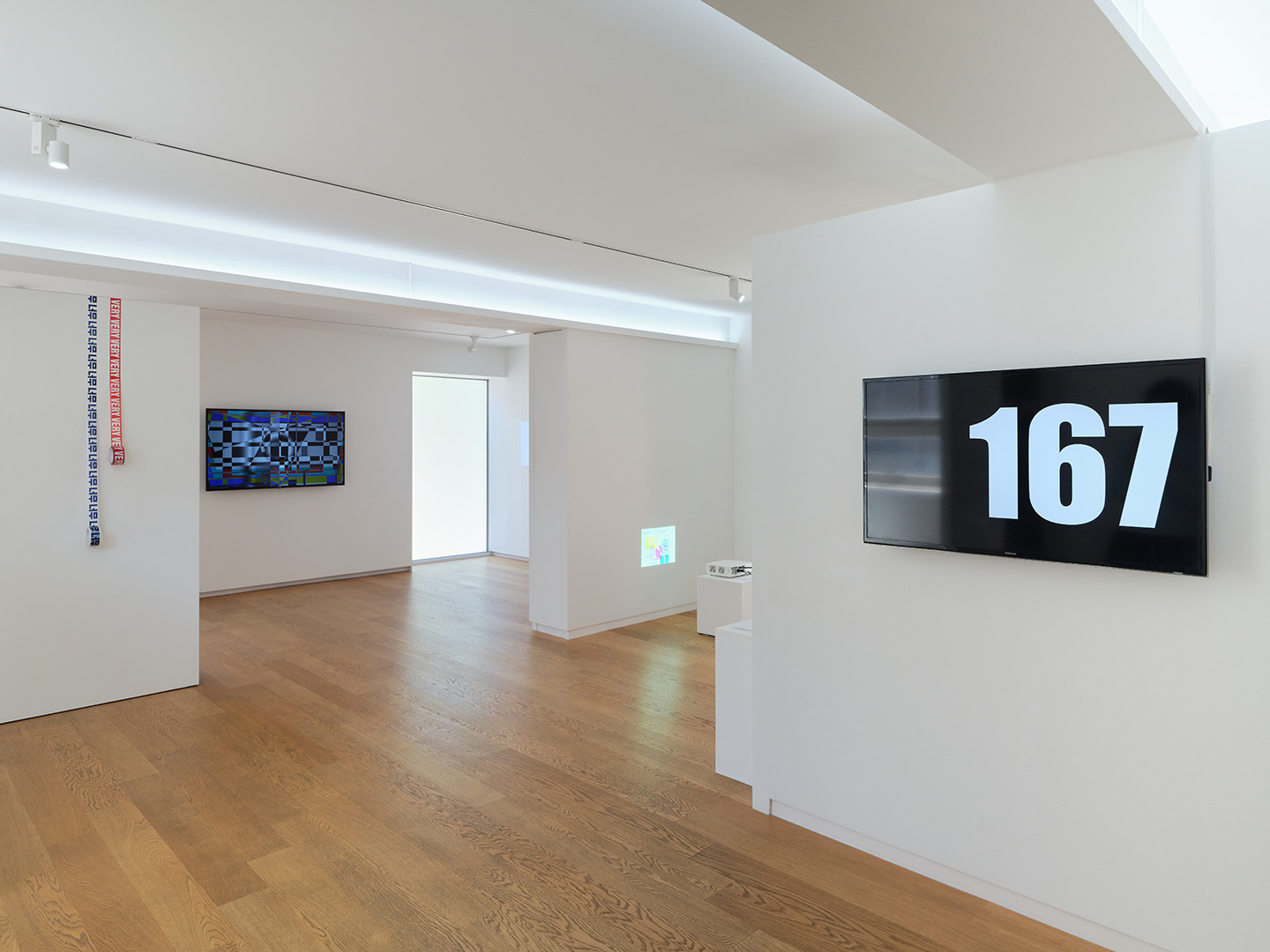

Sulki and Min: 1,056 Hours
Solo exhibition
- 2020
- Whistle, Seoul
- 11 September–24 October
Following is an exhibition introduction written by Rhee Z-won:
The title 1,056 Hours indicates the show’s total duration, 44 days. As it implies, the graphic designers Sulki and Min address time in this exhibition. More specifically, the works on display demonstrate how time is materialized – or becomes a material – in relation to language and media. None of the works, however, directly delves into any of the issues. Instead, they play with them like touch and go, almost as if evading the questions that they have asked themselves. There is bit of a joke like humor about the entire exhibition. Even the work descriptions: “1 second” or “single-channel video on 55-inch Samsung TV The Serif KQ55LST01AFXKR” sound like they imply something other than the duration or medium.The works gently tweak the notions of change, rhythm, and repetition, all integral to our understanding of time, challenging certain expectations with time-based media. Time Out, for example, is a “motion” picture that barely moves, counting the piece’s hours on display throughout its 44-day “running” time. Dinosaur, 3rd Edition is a Korean translation of one of the shortest novels in the world, El dinosaurio (1959) by Augusto Monterroso, whose seven-word text (both in the Spanish original and Sulki and Min’s translation) is stretched four times here by simple repetition.
Other works deal with change. Transitions shows nineteen different ways screen fades from white to black using the slide change effects provided by Apple Keynote software. The Book of Chances, 4th Edition generates endless versions of composite pages by reconstructing decomposed images of the book pages that Sulki and Min designed. Materials displays a list of art mediums at a pace that is so slow that the viewer may not even notice the changes. The sense of confusion is reinforced by the blurred image contrasted with its container’s sharp materiality (the high-definition TV).
Simple repetitive movements fascinate Sulki and Min. Statistical Pattern 1 and Statistical Pattern 2, for example, take the motions inherent in the respective chart types – spinning in the pie chart and extending in the bar chart – and repeat them endlessly. The flickering noise pattern of Background Image is taken from the animated GIF background of Sulki and Min’s website, amplified to the foreground by the strong presence of the coarse LED screens.
As graphic designers, Sulki and Min always deal with language and media. With more and more designers working with moving images these days, there is nothing special about extending their work to time-based media in this exhibition. It is not their first foray into the field anyway (some of the works on display were exhibited elsewhere before). However, the way they use the medium is different from the typical “motion graphic” work. They do not try to tell any stories or overwhelm the viewers with impressive visual effects. They also do not immerse you in the images or lure you into the screen, either. Instead, they shift your attention to the devices and their relationship with what they display, encouraging you to treat both the medium and the content as a whole. If this emphasis on objecthood feels somewhat theatrical, perhaps that is their take on “media art.”
- Project type:
- exhibition
- See also:
- Presented works
- Whistle

